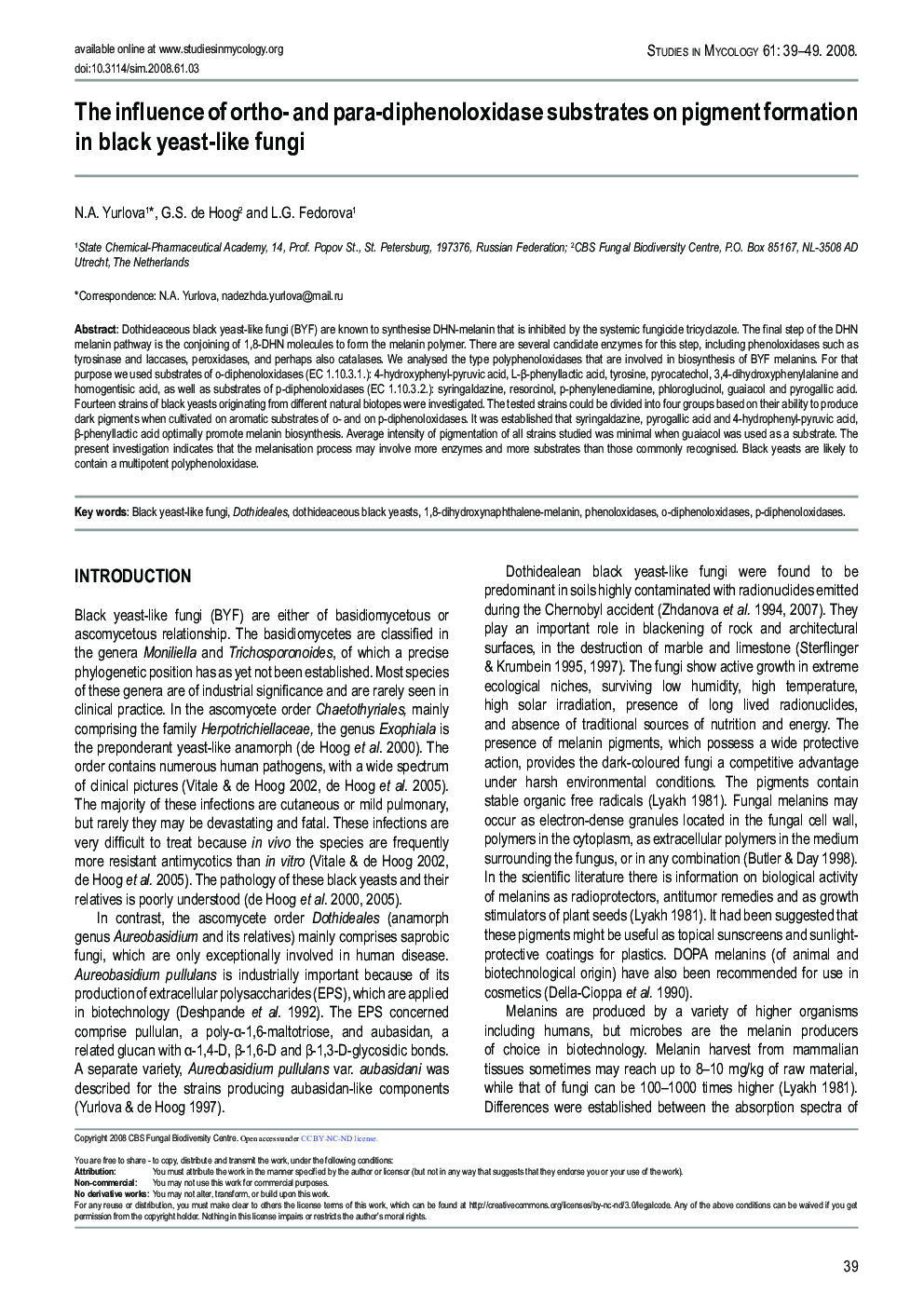| Article ID | Journal | Published Year | Pages | File Type |
|---|---|---|---|---|
| 4370751 | Studies in Mycology | 2008 | 11 Pages |
Dothideaceous black yeast-like fungi (BYF) are known to synthesise DHN-melanin that is inhibited by the systemic fungicide tricyclazole. The final step of the DHN melanin pathway is the conjoining of 1,8-DHN molecules to form the melanin polymer. There are several candidate enzymes for this step, including phenoloxidases such as tyrosinase and laccases, peroxidases, and perhaps also catalases. We analysed the type polyphenoloxidases that are involved in biosynthesis of BYF melanins. For that purpose we used substrates of o-diphenoloxidases (EC 1.10.3.1.): 4-hydroxyphenyl-pyruvic acid, L-β-phenyllactic acid, tyrosine, pyrocatechol, 3,4-dihydroxyphenylalanine and homogentisic acid, as well as substrates of p-diphenoloxidases (EC 1.10.3.2.): syringaldazine, resorcinol, p-phenylenediamine, phloroglucinol, guaiacol and pyrogallic acid. Fourteen strains of black yeasts originating from different natural biotopes were investigated. The tested strains could be divided into four groups based on their ability to produce dark pigments when cultivated on aromatic substrates of o- and on p-diphenoloxidases. It was established that syringaldazine, pyrogallic acid and 4-hydrophenyl-pyruvic acid, β-phenyllactic acid optimally promote melanin biosynthesis. Average intensity of pigmentation of all strains studied was minimal when guaiacol was used as a substrate. The present investigation indicates that the melanisation process may involve more enzymes and more substrates than those commonly recognised. Black yeasts are likely to contain a multipotent polyphenoloxidase.
